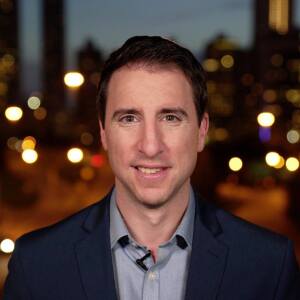BUFFALO, N.Y. — On the east side of Buffalo, N.Y., to live means to clean, work, and wait for the bus amidst reminders of horrific violence.
“Every day, you see people out here crying and stuff," said Benjamin Foster as he dropped his stepson at the school bus.
They stood in front of the Tops grocery store, where, on May 14, 10 people were killed inside. Police say the shooter was an 18-year-old who drove hours to target the almost entirely Black community.
What has the community been like since then?
“Uneasy," Foster said. "We’re on alert now."
He then added another detail more personal to him.
“I haven’t been to no supermarket, because it’s like I don’t know what’s gonna happen. And that’s crazy.”
The list keeps growing of American communities coping with mass shootings. Often they leave inescapable trauma upon places and people who had already felt forgotten. The east side is among the most segregated areas in what study after study shows is one of the most segregated cities in America. They fought to get that store which became a crime scene.
“Poverty already existed," said Raziya Hill, who runs the nonprofit Every Bottom Covered. "Then, you lay a pandemic on top of that. And now, I mean, nothing spells racial injustice like a domestic terrorist coming into the Blackest community in Buffalo and slaughtering seniors at a grocery store.”
Hill was raised on the east side, and so was Tandra Parker, who runs the nonprofit Rooted in Love. These days, both organizations continue to work extra long days to give supplies to those who, when the shooting happened, suddenly had no place to get them.
“They would get them at Tops," Parker said. "And what we have to understand is a lot of people have not left that community since the shooting. They’re still dealing with trauma.”
The emotions engulfing so many are written on a whiteboard in the office of Reverend Denise Walden-Glenn. The reverend was the clergy member who met with the families of victims the day of the shooting. On the day we visited, her group VOICE Buffalo was strategizing about urging east siders to vote.
“When you lose someone to violence," Rev. Walden-Glenn said, "it’s like someone reached into your world and snatched something out. This is not a moment that’s going to pass quickly. This is a moment we need to sit with and wrestle with.”
So many want to do something. So many still can’t process the past.
“I come here every day," said Grady Lewis, who was outside Tops on May 14 when he heard what was happening inside.
“I’m drowning myself in it because I’m always gonna see the images," he said, "so I’m trying to get over it that way."
The memorial surrounding Tops is massive, colorful, and full of flowers, mementos, and portraits of the victims.
"I was a minute away from being in there," Lewis said. "And I’m thinking, ‘If I was in there, and I got shot, I don’t want my face in front of no building. I want the people to stand up and make laws to change it so that this never happens to anyone again. I don’t want balloons. I don’t want no flowers, no flags. I want change.”
This is a snapshot. Soon after we left, the Tops grocery store reopened, a decision many didn't support. It’s a journey of grief with no defined end.
But the community must somehow move forward.
They cannot ignore the crime scene at their center. But they must not let that crime erase the community they embrace.
“Buffalo is not just chicken wings and the Bills," said Hill, "and we are not broken right now. We are bruised."




